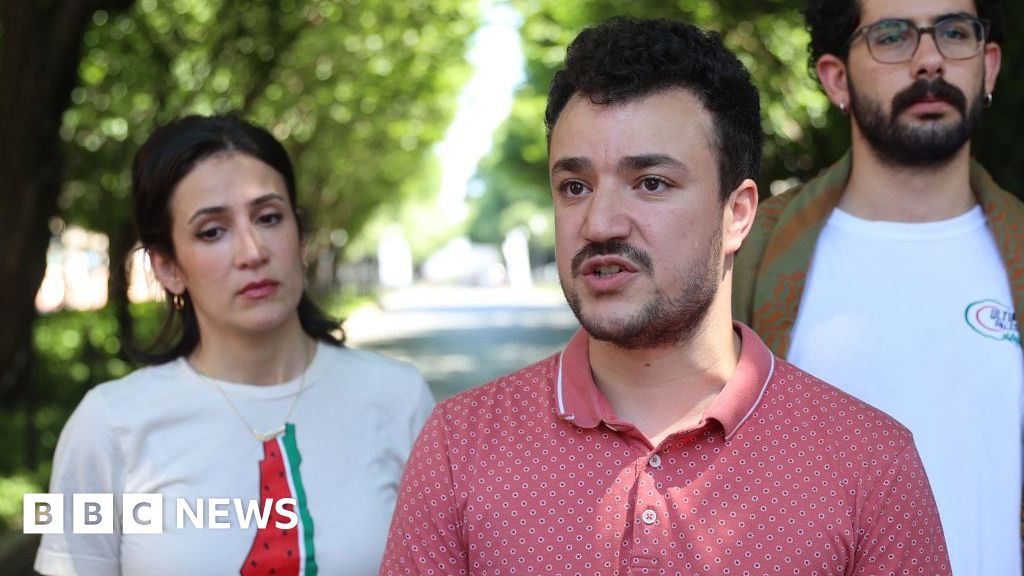- Social Media
Texas to require age verification for app purchases
时间:2010-12-5 17:23:32 作者:Sustainability 来源:India 查看: 评论:0内容摘要:protests in the U.S.protests in the U.S.
Hawaii and most of Arizona don’t make the spring switch, sticking to standard time year-round along with Puerto Rico, American Samoa, Guam and the U.S. Virgin Islands. Worldwide, dozens of countries also observe daylight saving time, starting and ending at different dates.Some people try to prepare for daylight saving time’s sleep jolt by going to bed a little earlier two or three nights ahead. With a third of American adults already not getting the recommended seven hours of nightly shuteye, catching up can be difficult.

This article is part of AP’s Be Well coverage, focusing on wellness, fitness, diet and mental health.The brain has a master clock that is set by exposure to sunlight and darkness. This circadian rhythm is a roughly 24-hour cycle that determines when we become sleepy and when we’re more alert. The patterns change with age, one reason that early-to-rise youngsters evolve into hard-to-wake teens.Morning light resets the rhythm. By evening, levels of a hormone called melatonin begin to surge, triggering drowsiness. Too much light in the evening — that extra hour from daylight saving time — delays that surge and the cycle gets out of sync.

Sleep deprivation is linked to heart disease, cognitive decline, obesity and numerous other problems. And that circadian clock affects more than sleep, also influencing things like heart rate, blood pressure, stress hormones and metabolism.Fatal car crashes temporarily jump the first few days after the spring time change, according to a study of U.S. traffic fatalities. The risk was highest in the morning, and researchers attributed it to sleep deprivation.

Then there’s the cardiac connection. The American Heart Association points to studies that suggest an uptick in heart attacks on the Monday after daylight saving time begins, and in strokes for two days afterward.
Doctors already know that heart attacks, especially severe ones, are a bit more common on Mondays generally — and in the morning, when blood is more clot-prone.Oklahoma overall has a maternal mortality rate of about
live births, significantly higher than the national average of about 23. But in Jackson’s quarter-century tenure, she said, there have been no maternal deaths among clients.Pivotal to Healthy Start’s success are care coordinators like Krystal Keener, a social worker based at Oklahoma State University’s obstetrics and gynecology clinic, where clients get prenatal care. One of her responsibilities is to educate clients about health issues, like how to spot the signs of preeclampsia or how much bleeding is too much after delivery.
She also helps with practical matters: Many clients don’t have cars, so they call Keener when they need a ride to a prenatal visit, and she assists in scheduling one.With doctors, Keener serves as a patient advocate. On a recent afternoon, Keener sat in on a prenatal appointment for Areana Coles. A single mom, Coles was joined by her 5-year-old daughter, who was born prematurely and spent time in intensive care.
- 最近更新
- 2025-07-07 06:47:02Trump's tariffs would cut US deficits and shrink the economy, CBO says
- 2025-07-07 06:47:02The British jet engine that failed in the 'Valley of Death'
- 2025-07-07 06:47:02Trump's tariffs would cut US deficits and shrink the economy, CBO says
- 2025-07-07 06:47:02Rare oil portrait of Mahatma Gandhi to be auctioned in London
- 2025-07-07 06:47:02Trump administration revokes guidance to hospitals on emergency abortions
- 2025-07-07 06:47:02Sinner beats Bublik, reaches 2nd straight French Open semifinal
- 2025-07-07 06:47:02Edinburgh Filmhouse sets date for big screen comeback
- 2025-07-07 06:47:02Army leaders defend parade and border spending
- 热门排行
- 2025-07-07 06:47:02caught fire after landing in Denver
- 2025-07-07 06:47:02Unseen works by distinctive artist to be auctioned
- 2025-07-07 06:47:02Occer 12x25 Compact Binoculars
- 2025-07-07 06:47:02Trump afirma que Putin le dijo que Rusia responderá a reciente ataque ucraniano
- 2025-07-07 06:47:02Cordless 8-in-1 Lightweight Stick Vacuum$90$140Save $50with coupon
- 2025-07-07 06:47:02New German leader Merz is meeting with Trump in Washington
- 2025-07-07 06:47:02Fluminense edge out Al Hilal 2-1 to reach Club World Cup semis – updates
- 2025-07-07 06:47:02When joy turned to horror for Bengaluru fans celebrating team's IPL win
- 友情链接
- US lifts first sanctions on Syria following Trump’s surprise announcement South Sudan on edge as Sudan’s war threatens vital oil industry Barcelona’s Lamine Yamal signs new six-year contract ‘Farcical’: Venezuelan opposition denounces arrest before weekend vote How a ‘Gold Mafia’ is looting Southern Africa, washing dirty cash Israel maintains minimal aid deliveries to Gaza amid hunger crisis Amid US trade war, China’s Xi goes on South Asian charm offensive Video: Malaysia calls for expanded Myanmar ceasefire at ASEAN Summit Trump Media to raise $2.5bn to invest in Bitcoin Pakistan promotes army chief Asim Munir to field marshal: Why it matters Oil riches are on the horizon as Suriname chooses its next government The most dangerous weapon in South Asia is not nuclear Ship carrying oil and hazardous cargo sinks off Kerala coast Charles III to give ‘Speech from the Throne’ in Canada: What to know Fact check: Do Trump’s ‘white genocide’ claims to Ramaphosa hold up? Israeli embassy staffers shot dead in DC: What we know of attacker, victims Pope Leo identifies AI as main challenge in first meeting with cardinals International Tea Day: Spilling the tea on unusual brews around the world US judge temporarily bars Trump admin from ending NYC congestion pricing Liverpool car ramming casts ‘dark shadow’ over victory parade Trump’s 100-day scorecard: Executive orders, tariffs and foreign policy Chaotic arrest of Venezuelan migrant in New Hampshire Technicians in Gaza make artificial limbs out of recycled materials 100 photos from Palestine Kylian Mbappe wins European Golden Shoe award for first time Malaysia wants Myanmar ceasefire extended amid ASEAN ban on coup leaders South Sudan refugees in Ethiopia face ‘health catastrophe’, charity warns M23 accused of possible ‘war crimes’ in eastern DRC: Rights group Why are the number of flights reduced at Newark airport in the US? How common is Israel’s use of human shields in Gaza and the West Bank?
